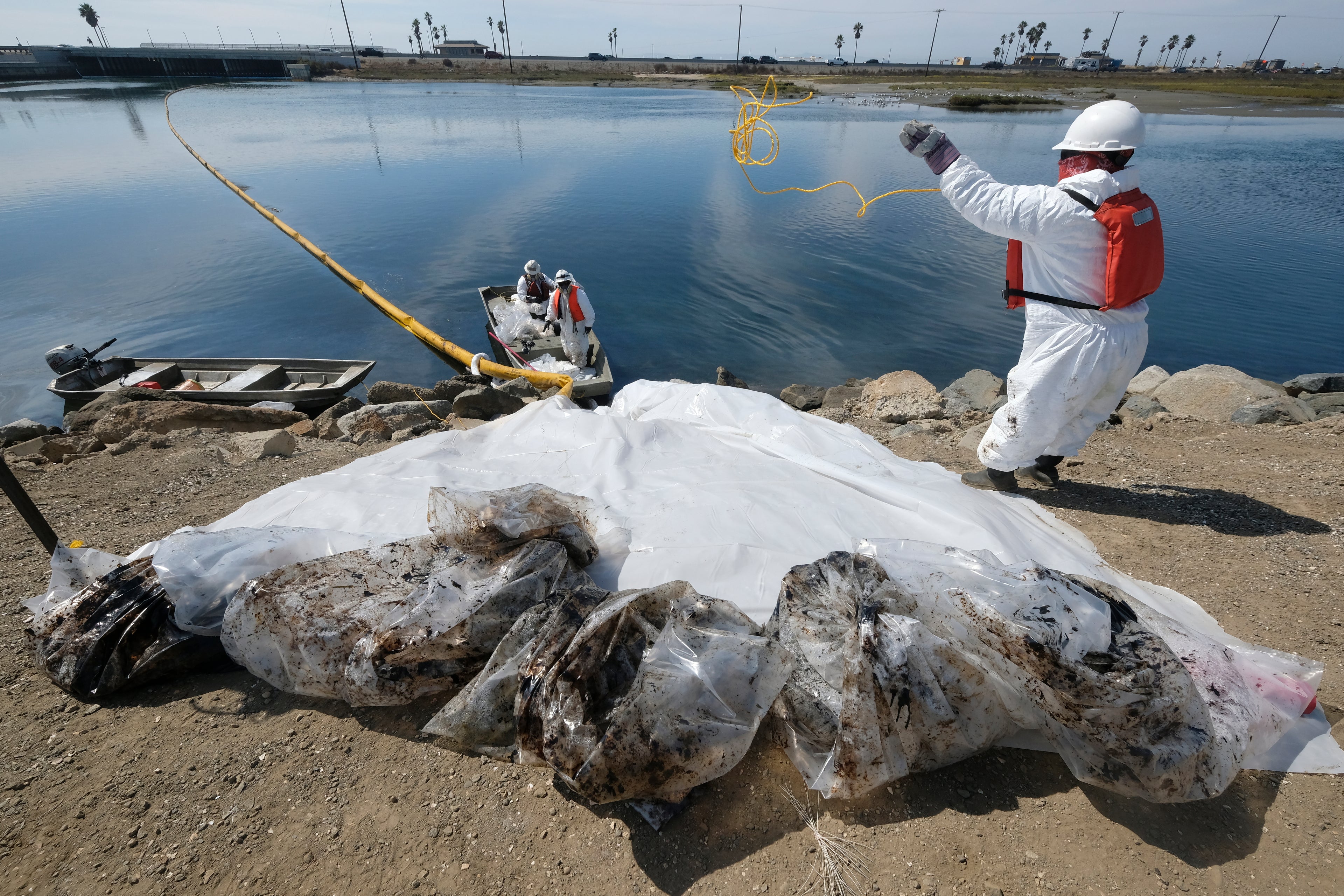Booms, skimmers among tools used to cleanup from oil spills
Crews have deployed skimmers and floating barriers known as booms as they try stop oil from a massive spill in Southern California from further fouling the beaches, wildlife and protected wetlands of the area

Your support helps us to tell the story
From reproductive rights to climate change to Big Tech, The Independent is on the ground when the story is developing. Whether it's investigating the financials of Elon Musk's pro-Trump PAC or producing our latest documentary, 'The A Word', which shines a light on the American women fighting for reproductive rights, we know how important it is to parse out the facts from the messaging.
At such a critical moment in US history, we need reporters on the ground. Your donation allows us to keep sending journalists to speak to both sides of the story.
The Independent is trusted by Americans across the entire political spectrum. And unlike many other quality news outlets, we choose not to lock Americans out of our reporting and analysis with paywalls. We believe quality journalism should be available to everyone, paid for by those who can afford it.
Your support makes all the difference.Crews on Sunday deployed skimmers and floating barriers known as booms as they tried stop oil from a massive spill in Southern California from further fouling the beaches, wildlife and protected wetlands of the area.
Authorities have multiple tools and techniques they can deploy try to slow the oil from spreading and then cleaning it up from the waters and land areas – methods they’ve honed in decades of work trying to mitigate the damage from such environmental disasters.
Experts are still trying to determine why the leak off Orange County happened but Amplify Energy said Sunday it had stopped the oil from flowing. At least 126,000 gallons (572,807 liters) had spilled into the waters.
Contractors in small boats deployed the skimmers and booms, hoping to keep more oil from getting into the wetland Talbert Marsh in Huntington Beach Booms are interconnected barriers spread across the water.
On Sunday the contractors also used plastic bags to gather oil from the water. The National Oceanic and Atmospheric Administration says such hands-on work is often used in cleanup response.
The agency says crews will use shovels and other hand tools to remove oil from the shoreline, low-tech techniques that are employed when heavy machinery can't reach areas.
According to the agency, other methods that can be used include flushing oil from shorelines into the water, where it's easier to collect; industrial vacuums to hoover up oil from land areas; specialized absorbents that “sponge” up oil but not water; and "in situ burning," which is lighting oil from a new spill on fire while it floats on the surface.